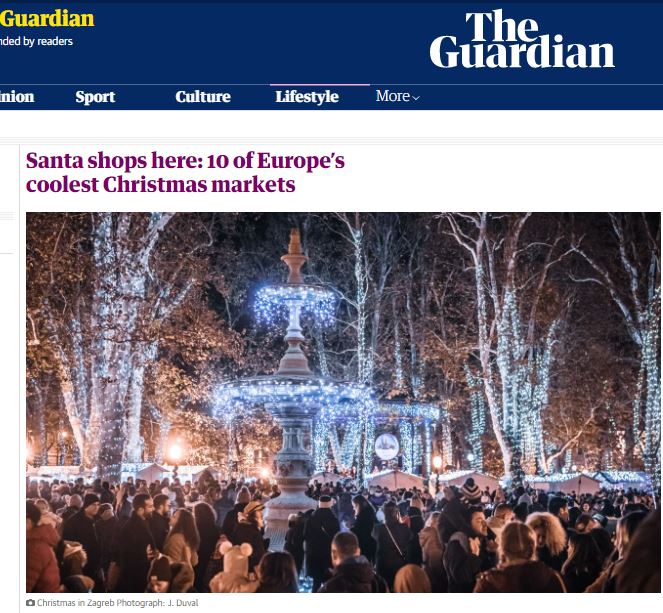Harfa International School in Split Expanding, Adding Kindergarten, Elementary, High School
December 12, 2022 - More great news for those looking for international schooling options in Split, as Harfa International School announces an expansion of its services after a very successful start.
Motivated by excellent feedback from the international audit, Harfa International School is expanding and will offer kindergarten, elementary school as well as high school education next fall!
Some say we can only dream of the Finnish education system. But that is not true anymore for children in Split. The address Osmih mediteranskih igara 2 is located right in the heart of Poljud, in the city of Split. That is where the third generation of elementary school students are being educated, at Harfa International School. As we already learned before, Harfa provides the kind of education we all wish for. A student-oriented education where a "one for all" rule is not applied, where the talents and skills of each child are monitored individually, and the teachers represent mentors, ensuring everyone reaches their full potential. Their own, unique potential.
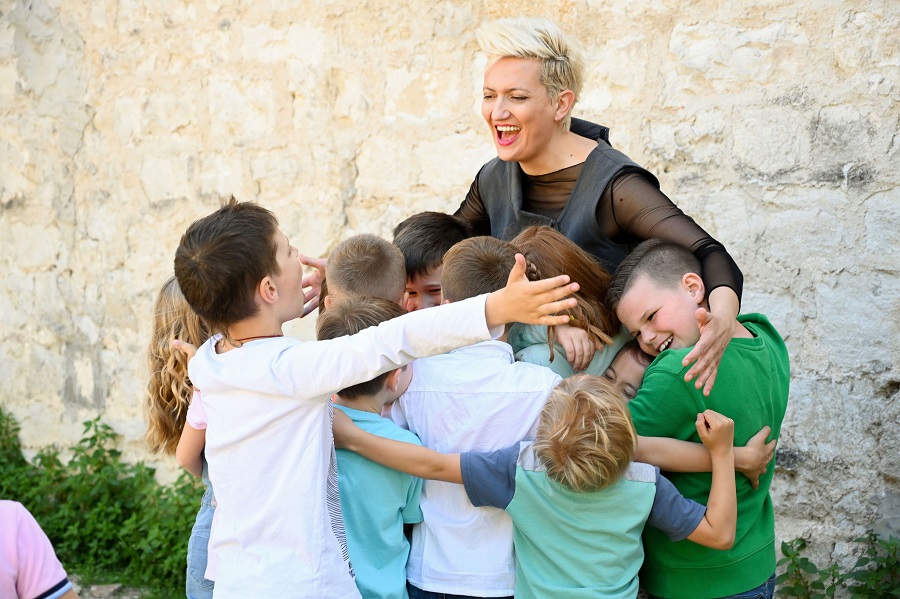
Curious about the news that Harfa is expanding and opening an international kindergarten as well as a high school alongside the current elementary school, we paid them a visit again. We wanted to find out more details and learn about how they achieve excellent academic results in a way that is so different from other schools.
- Yes, it is true that in addition to the elementary school, we are opening an international kindergarten as well as a high school. We are excited because we received excellent feedback during the visit from the international IB audit. Motivated by their encouragement, confirming that our methods are the right ones, starting the next school year, we are expanding. We follow the international IB Primary Years Program (PYP), balancing it with the Croatian curriculum. In addition to regular classes in the morning, our students have regularly scheduled lunch and two snacks, additional time for studying and writing homework, as well as additional workshops such as drama, chess, mental arithmetic, STEM workshops, music workshops, and individual workshops, depending on the needs. Our goal is to achieve learning outcomes in an interesting and student-oriented way. Our methods are based on inquiry-based teaching, research, projects and teamwork, hands-on learning, but above all, on building strong connections between students and teachers who serve as mentors, while students take responsibility for reaching the classroom goals on a daily, weekly, monthly and annual level. We teach them to understand the importance of life-long learning and to recognize the power of their responsibility in achieving all life goals, including school goals. – we learn this from the school principal Antonia Tomas.
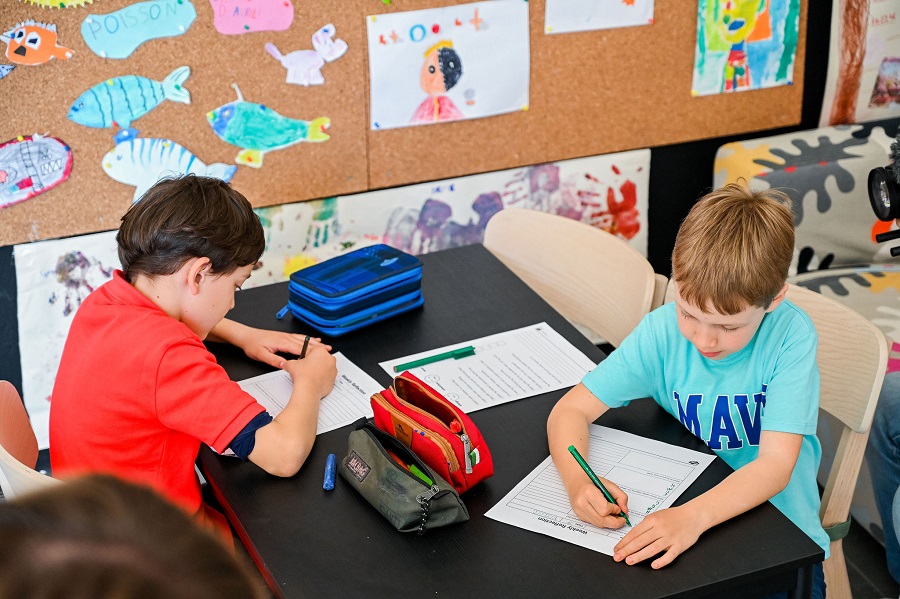
While listening to her explanations and the exciting news about spreading the school offer, we hear the students loudly calling out to their teacher. We find out that they are third-graders who do not allow the teacher to end the lesson until they are done with their plans for the day.
- See, this is the result of allowing children to be co-creators of the lesson plans. Every Monday morning, following the curriculum and the learning outcomes, they plan when and how they will learn about a certain unit. You can see their plan right there on that wall. This is what they have committed themselves to. What do you think; will they skip something? No way! No one wants to leave until the plan is fully executed. – explains the school principal.
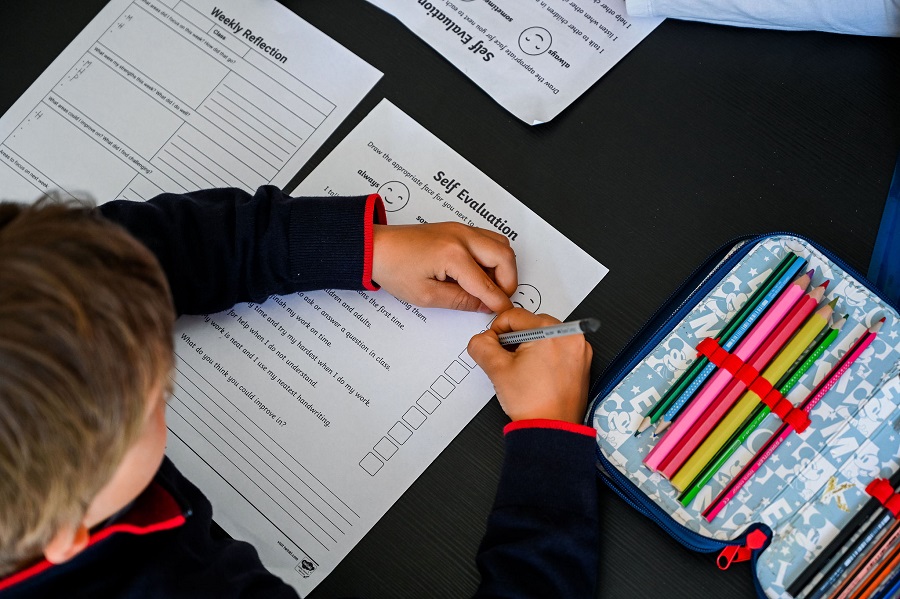
- It’s so inspiring seeing children from different cultures communicating fluently in two languages. As an international school, the official language of communication is English, but the children also learn Croatian. It is interesting to see foreigners wanting to learn the Croatian language with great interest and our children helping them in this. In addition, they have enough free time to play and communicate, and they acquire languages very quickly. Seeing a child who recently came from abroad and now speaks Croatian fluently or a Croat who didn't speak English at all and now communicates in that language without any barriers is daily proof of how quickly children acquire knowledge. - explains Dubravka Šušnjara, a first-grade teacher who recently moved from Australia.
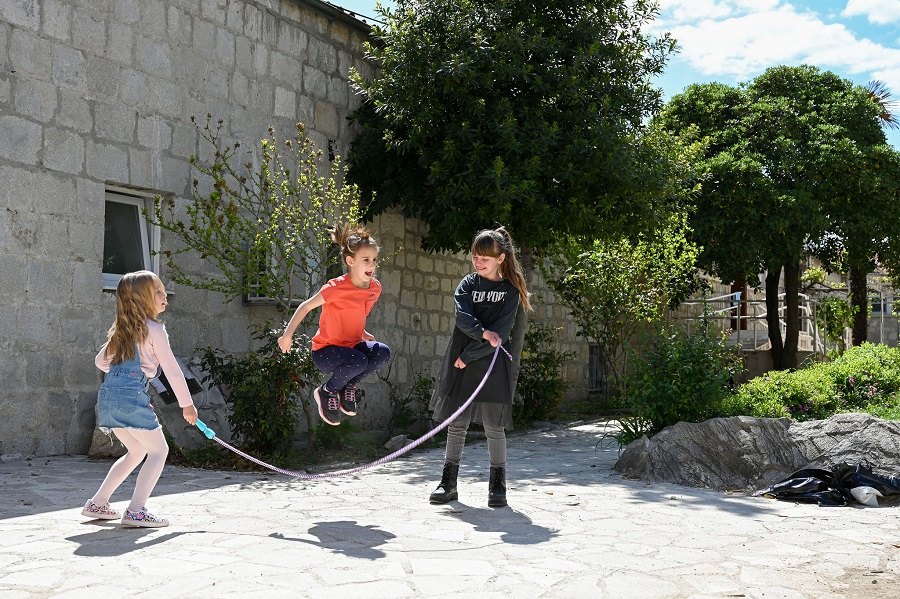
We are interested in her experiences in Australia and in Croatia. Which one is better? But she just waves her hand and adds – This is really the center of the world. With Split as a city tailored for a balanced life and this kind of education, we didn't think twice. My husband and I decided to return after 12 years, and the main reason was precisely the fact that there was a school like this here. As I am a teacher myself, I also applied for an open position in the school this year. I am grateful that my child, as well as myself, have the opportunity to be a part of such a change in education. - concludes teacher Dubravka.
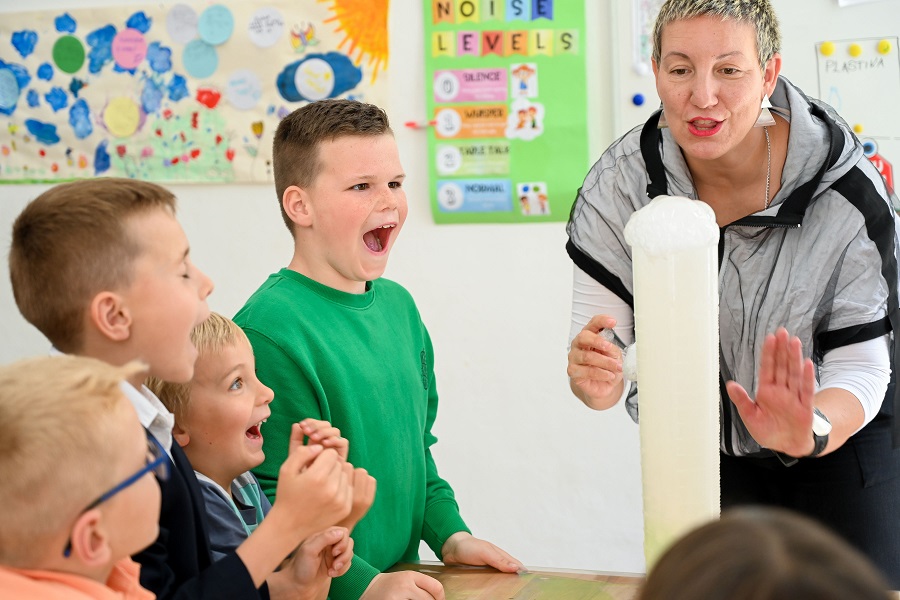
We have already written about Harfa International School. What started as an enthusiastic project founded by Harfa - the publishing company, turned into a global example of excellent practice. During the preliminary application, they tell us, for the prestigious international "IB Primary Years Program (PYP)" which was planned only for the future, the international audit gave Harfa the highest marks and suggested entering the accreditation process immediately. This is how a small private school from Split became an international example of excellence in education.

The person behind this inspiring story is Irena Orlović - a psycho-social counselor and one of the main protagonists of Mastercard's short documentary films FIVE, about female entrepreneurs who have changed the world. Irena was chosen as a representative for Europe, and her inspiring story from Croatia was followed by millions of viewers around the world. After 17 years in publishing books by the world's most famous authors in the sphere of children’s socio-emotional development, parenting, and mental health in general, through the award-winning web application Pametnica for the development of children's potential and series of educational workshops for parents, teachers, pedagogues... Irena has decided to turn her rich experience into a school in order to set an example that educational reform, in the best possible way, is very possible in practice.
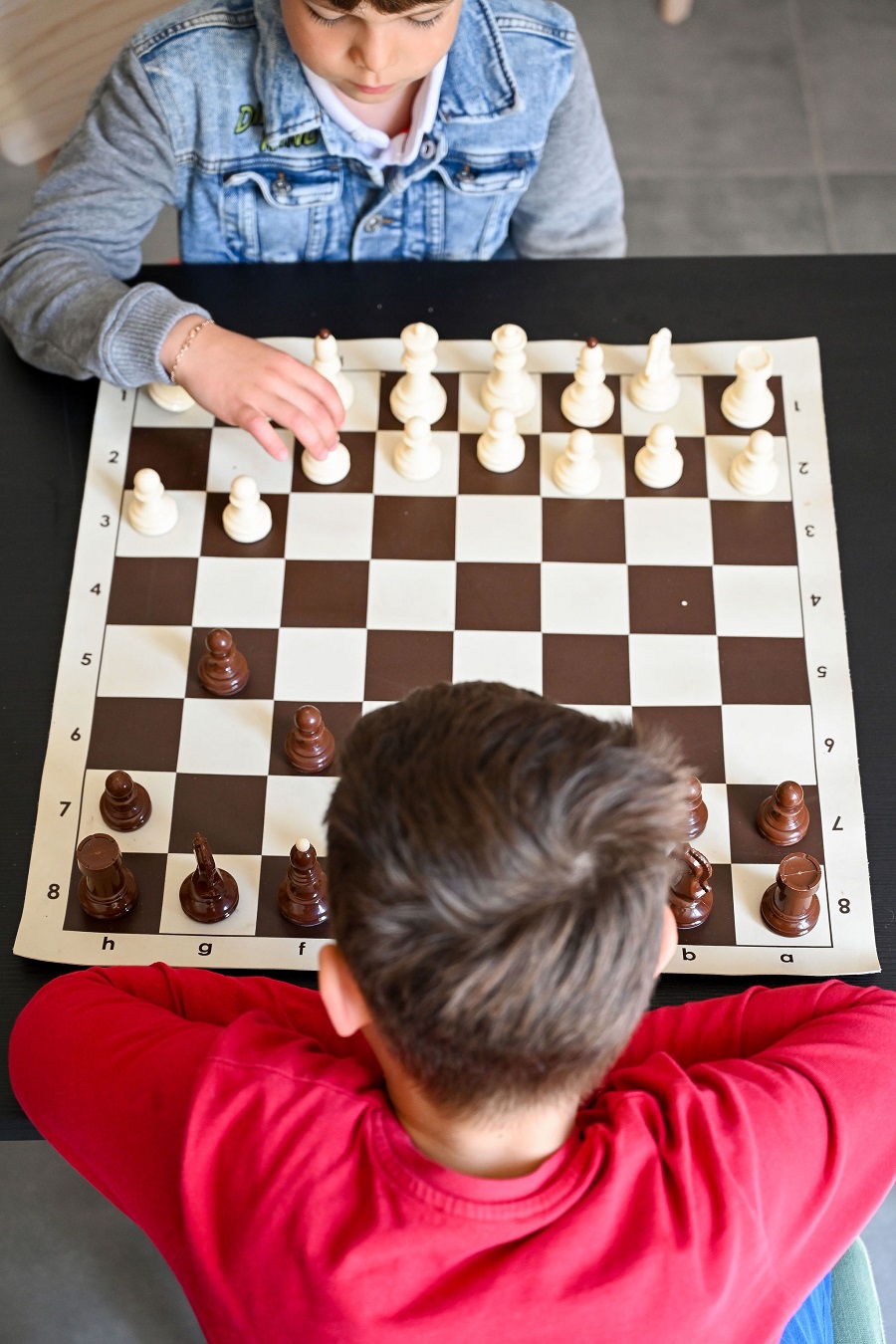
- Many refer to the successful "Finnish" model of education. - Irena tells us. - Some things are culturally determined, and some took years of work to change. Finland, too, carried out its reform more than 20 years ago at a time when it was clear that the same path was no longer sustainable. Some other models in the world can also be analyzed, and we can learn something from all of them. This is what we do at Harfa International School. We collect the best world practices, both scientific research about a child’s well-being, as well as best school practices, and we adapt them to our needs. The third generation is underway, and I can only say that we are very excited about the results we see every day.
We are often asked if the children in our school have grades. The grades exist, but the students are self-reflecting with the support of the teacher-mentor. I want to highlight that our world does not revolve around grades. Our world revolves around creating quality relationships between teachers and students, around strengthening that trust as a basis for everything else. At the end of the year, the children give their own opinion about which grade they deserve. Don't fall into the trap of thinking they are giving themselves the highest grades. They are very self-critical and their conclusions are rarely different from reality. This is how we teach them to take responsibility for their actions from an early age. Our goal is to encourage curiosity and develop a passion for learning through research, practical work, and projects, by connecting information with real-life situations. We prepare children for the future where they will be ready for all the challenges they will have to face, and this is the essence of education, isn’t it? – Irena Orlović ends her story seriously.
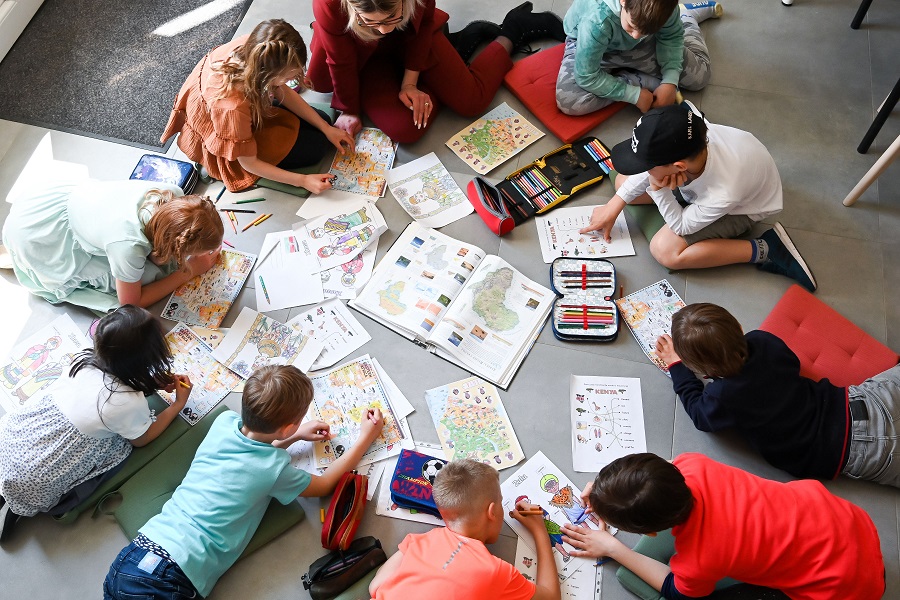
We are interested in learning how long it takes for children to be able to give themselves an objective assessment.
- People do not function "at the press of a button!" Everything I mentioned earlier requires a lot of work and patience. And, of course, trust in teachers. I know it's hard to accept a different path when we have expectations that have been imprinted in our heads for generations. But, it is clear to all of us that we do not all have the same "settings". Someone will get to the destination in one way, others in a different way. The point is that everyone will reach their goal, which is the fulfillment of their full potential. And trust me, this will happen if they are offered the space and the right means to do so. - she explains.
While we are talking, children approach us with trays of food. Today, along with a salad, they have polenta and tomato sauce on the menu.
- We plan the menu in cooperation with nutritionists, but many children have already learned in their families that healthy is better. Try them! Offer them chocolate and an apple and let's see which one they will choose! - laughs Irena. We don't even need to check, we see that they would choose the healthy option. It is very clear that this school is trying its best to make the students fall in love with studying.
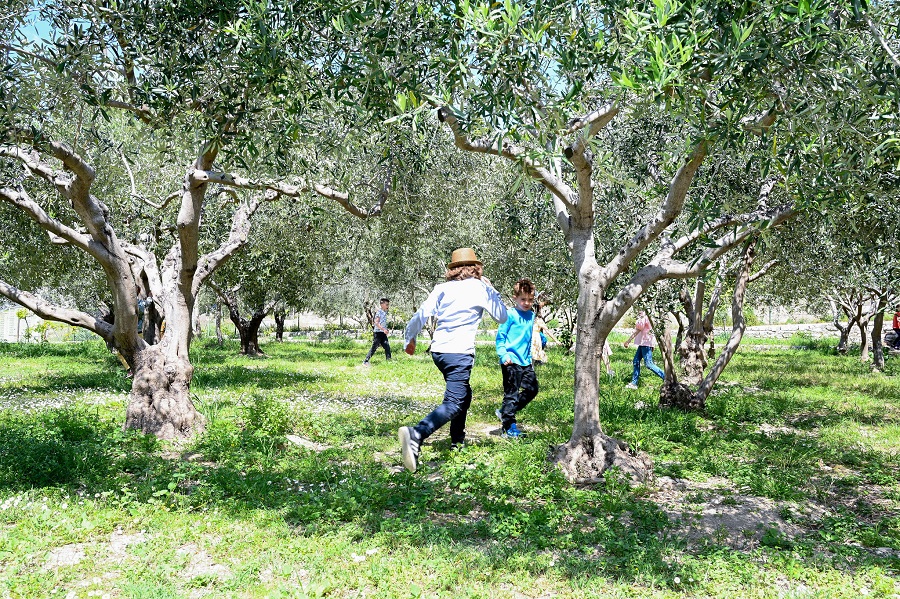
- Yes, we want children to like learning. Our goal is to make inquiry learning and knowledge acquisition their passion. We do not want to instill dry facts in them because the brain remembers what is interesting and important. To some, it looks like we are just playing with the children, but science has proven that this way is more effective in the long run. Let's look around. Take a look at your own children. Do they remember better when they "learn by heart" out of a book or when you tell them an interesting story, play with them, do some research with them and connect information with real-life situations familiar to them? There isn't even much wisdom there. Changes in education only require a lot of self-motivation and an effort to connect with children in a way that is in line with their needs. Yes, the challenges of technology and its impact are not negligible, but wasn't that the case throughout various historical periods in times when changes were made? - explains Irena.
Through children’s laughter, we hear a barely perceptible echoing sound. Suddenly, silence. Irena quietly explains: - Children know when it's time to play and when it's time to concentrate and study. When they hear this vibrating bell, it's time to learn.
The drama workshop will start soon.
- Through drama, they develop presentation skills, face the fear of public speaking, practice self-confidence, memory, concentration... and many other things. To be ready for the future, we should start on time and without pressure, through the game. The same thing is with the other workshops. Chess, mental arithmetic, STEM workshops, music workshops, debates, mental health empowerment workshops, entrepreneurship workshops... each of these workshops is carefully designed to support the learning outcomes, but also the development of soft skills and knowledge needed to face the challenges of the future.
- I used to believe that the same and even better results could be achieved differently from what we had in our traditional education system. Now, I have no doubts about it at all. Three classes at Harfa International School prove that every day. The point of education is to get to know each child, what makes them happy and motivated, and to support them in that. Therefore, I decided that for the next school year, we will open a school center where we will follow our children on their life path from the age of 3 to 18. We are now in the process of opening a kindergarten and a high school, in addition to the existing elementary school according to our program. – explains Irena Orlović, and the slogan of her school is "School for the Future".
Learn more about Harfa International School on the official website.
One Particular Zagreb Receipt Attracts Attention on Social Media
December the 12th, 2022 - It's been quite some time since we've seen receipts and bills and the figures printed on them be the topic of endless social media debate, but with inflation continuing to bite, some believe certain establishments are using this unpleasant economic situation to their advantage. One Zagreb receipt has taken Facebook by storm today.
There are still those who, despite struggling to make ends meet month to month, still have money set aside to enjoy dining and drinking out. With the prices of raw materials rising and the energy crisis still causing tremendous issues when it comes to paying the bills for many establishments, it's only natural that a few kuna extra will appear on bills and receipts issued for food and drink.
The post-pandemic period, accompanied by the dire situation in Ukraine and the inflationary pressures our bank accounts and pockets are all under, has seen those in the catering and hospitality sector try to earn money they lost back during pandemic-induced lockdowns of 2020 and early 2021. How many are actually taking advantage here, though? Some believe that many are using the situation in an underhanded way.
As Poslovni Dnevnik writes, under the heading ''I think every comment on this is redundant'' a photo of a Zagreb receipt has been doing the rounds on social media. According to that receipt, a mere cup of tea in that particular central city cafe costs more than 30 kuna, and a juice comes to more than 25 kuna.
For three cups of tea and two such juices, the clients paid 143.16 kuna, or, if we bother to convert into the currency we're set to introduce officially as of January the 1st, 2023 - 19 euros. It somehow sounds even higher when expressed in the bloc's single currency.
Could the justification for such high prices be the fact that the cafe is located in the very centre of Zagreb? According to the vast majority of comments - no, it cannot. As a central Zagreb resident myself, I can also say that there is very little justification for such high prices for very basic items and there are numerous cafes and pubs located in the very heart of the city where not even alcoholic beverages will come to such prices.
Are some establishment owners purely seeing an opportunity in this current climate of economic downturn and tighter belts? It's very likely, and this Zagreb receipt is likely going to be just one of many published on social media over the coming months.
For more, check out our news section.
Words Without Sound - A Brief Look at Croatian Sign Language
December the 12th, 2022 - Croatian sign language is the one language spoken in Croatia which of course has no sound to the words, but did you know that there's no clearly defined number of people living in Croatia who use it?
We've explored many of the dialects, subdialects and indeed languages in their own right as some linguists consider them to be which are spoken across modern Croatia. From the Dubrovnik subdialect (Ragusan) in the extreme south of Dalmatia to Northwestern Kajkavian in areas like Zagorje and Medjimurje, the ways in which people speak in this country deviate from what we know as standard Croatian language enormously. That goes without even mentioning much about old Dalmatian, Zaratin, once widely spoken in and around Zadar, Istriot, or Istro-Venetian.
There are known or at the very least educated guesses as to how many individuals speak most of the aforementioned languages. Of course, some, such as Istrian-Albanian, a form of Gheg (Geg) Albanian once spoken in Katun, are now extinct. Others, such as Istro-Romanian, are on UNESCO's severely endangered language list with very good reason. As stated, there is no firmly known number of people who use Croatian sign language, but it has been defined as an independent language system in and of itself. This means that it has its own rules surrounding grammar which have nothing to do with those used by hearing individuals.
Back in 2015, the Law on Croatian Sign Language and Other Communication Systems of Deaf-Blind Individuals in Croatia was passed, and now courses teaching this language are more or less commonplace in all larger Croatian cities. It is even taught as part of higher education, with university-level Croatian sign language being taught as different courses for undergraduate speech therapy students. This is mandatory.
Naturally, although their exact number remains unknown, the overwhelming majority of those capable and competent in Croatian sign language are members of the deaf or hard of hearing community living in Croatia, and the associations formed by and for them are some of the main bodies which hold classes and courses.
Some of those Croatian associations for the deaf and the deaf-blind are Savez gluhih i nagluhih grada Zagreba (The Association of the Deaf and Hard of Hearing of the City of Zagreb), Dodir (Touch), Kazaliste, and audiovizualne umjetnosti i kultura Gluhih – DLAN (Theatre, audiovisual arts and the culture of the Deaf).
For more on Croatian language, dialects and subdialects spoken across the country, as well as this history of language in this country, make sure to keep up with our dedicated lifestyle section.
Rovinj Advent Concept Encompasses Tradition and Glamour
December the 12th, 2022 - The Rovinj advent concept is an embrace of both glamour and tradition for a festive season well spent by the sea in that particular popular Istrian town.
As Poslovni Dnevnik/Marija Crnjak writes, sustainable development, prolonging the tourist season and increasing the quality of life of Rovinj's residents are among the main strategic goals with which the tourism sector plans to develop the town until the year 2030.
Within the scope of all of that, they also incorporated the new Rovinj advent concept called "Christmas by the sea" that will come to life starting this weekend. The entire Rovinj advent offer and programme, in terms of decoration, the gourmet offer and overall programme is based on Rovinj's local traditions, with the main star of it all, the traditional Rovinj batana (a form of locally made vessel). The batana is a symbol of the local community, and it can be found in several locations across Rovinj.
For the first time, the Rovinj advent programme takes place in three locations - on Lungomare Plaza, a more modern version of advent will be held, then there is also the so-called the traditional advent being held in front of the Church of St. Euphemia, where a life size hand-made nativity scene has been set up, and the third location, a more ''native'' advent, on the main city square, will showcase what Rovinj has to offer in terms of local food and more.
The new Rovinj advent concept, packed with events throughout the month of December, was created through the cooperation and synergy of the city, the Maistra tourist company, the Rovinj Tourist Board, various other stakeholders, institutions and those from the hospitality sector, all coming together and participating in the organisation of the programme. The decorating concept was created in collaboration with the well-known academic painter, florist and interior designer Sasa Sekoranja.
During the second weekend in December on the Lungomare promenade at the foot of the Grand Park Hotel, all visitors will have the opportunity to taste some traditional Istrian products - Prodan truffles, Istrian prosciutto, Reginex bakery products and cakes, Agrolaguna wines, local cheeses, Japanese delicacies from the restaurant will be present in eight advent cottages.
In addition to the Rovinj advent cottages, various local restaurants have prepared a special advent menu which involves the tasting of Istrian wines and brandy. Numerous stores will offer an interesting assortment of clothes and shoes, niche perfumes, cosmetics, jewellery, fashion accessories, and well-known international and Croatian cult brands with special discounts included.
Three Maistra hotels from Rovinj, Grand Park Hotel Rovinj, Lone and Adriatic, will all remain open for the festive season and for advent, which, like every year, will be decorated with attractive installations designed by Sasa Sekoranja. This time, unlike back during previous years, they've been inspired by the sea and motifs of local heritage. At the Hotel Lone, an advent offer of food and drinks, concerts and DJ performances every Friday and Saturday, wine tasting and live music in the Enoteka winter garden are expected.
It's worth noting that Rovinj was declared the destination of the year at the Days of Croatian Tourism in 2022, partly because the destination is being developed on the rich potential it has, such as autochthonousness, art and tradition, cultural heritage, and the tourist offer is adapted to the requirements of modern tourists in accordance with sustainable development and current travel and tourism trends.
For more, make sure to check out our dedicated news section.
Zagreb Advent Gems: Dagmar Meneghello's Art Collection
December 12, 2022 - The famous Croatian art collector exhibited part of her collection in her apartment at Krležin Gvozd in Zagreb. Every Friday and Saturday from 4 to 7 p.m. Dagmar Meneghello opens her home to all visitors who appreciate art.
Zagreb Advent, as they say at Večernji, received another must-visit cultural stop. The location is a private apartment at Krležin Gvozd 23 (on the second floor of which the Croatian author Miroslav Krleža lived until his death). The famous art collector Dagmar Meneghello returned to Zagreb after almost six decades of living in Palmižana on Hvar. She brought along the works of Zagreb painters that are part of her art collection. Following the theme of Advent and the joy that comes with it, she organised an Advent exhibition in her apartment that showcases the works of Šutej, Friščić, Eterović, and for the first time in Zagreb, Ivo Ćorković.
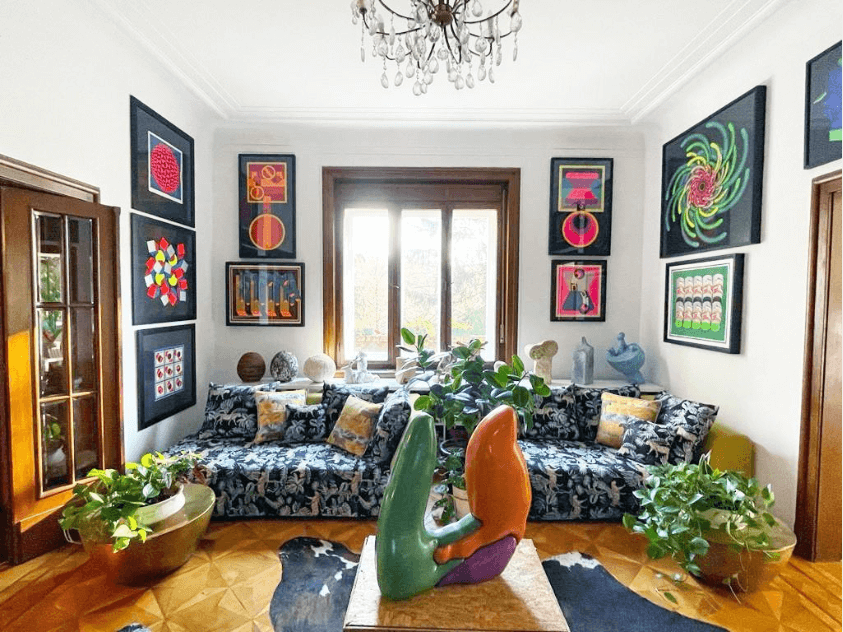
The exhibition can be viewed every Friday and Saturday from 4 to 7 p.m. during Dagmar’s open house days. In Zagreb, the movement of collectors opening their apartments to the public to show off their art is quite a novelty. Dagmar Meneghello learned of such a lifestyle in Germany and now finds it to be normal and necessary.
Dagmar Meneghello's art collection has about 3,000 works. It was collected over half a century, during which hundreds of artists created and exhibited at Dagmar’s home in Palmižana. Her Palmižana home was often the first contact of foreign visitors, mostly sailors, with Croatian culture and art. For fifty years, she invited artists to a tiny island, a gallery at the end of the world.
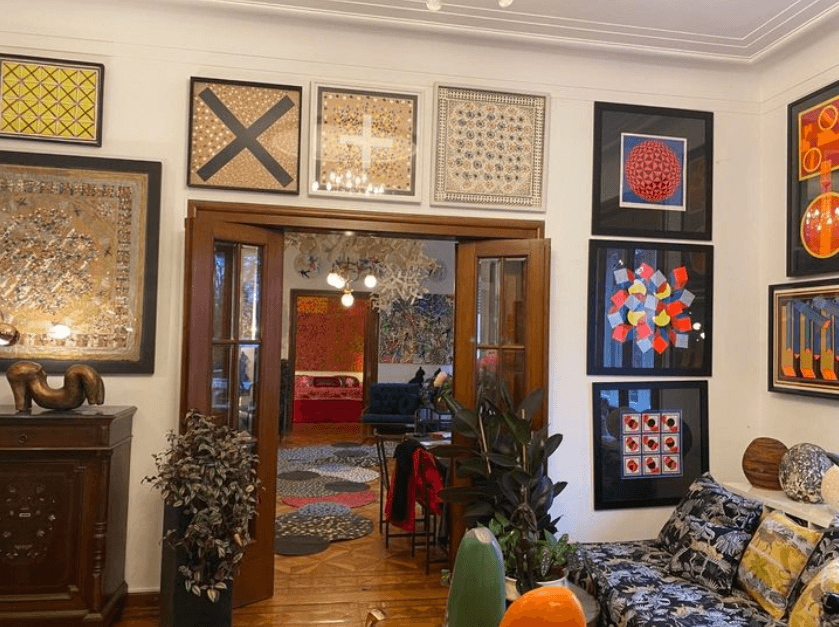
The works include numerous sculptors, from the great Kosta Angeli Radovani, Goldoni, Riba Lončarić, Kuzma Kovačić, Peruško Bogdanić to Petar Dolić and Petar Hranuelli, Alana Kajfeš, Vatroslav Kuliš, Bana Milenković, Toni Franović, Boris Demur, and Željko Jerman, to younger generations such as Paulina Jazvić, Koraljka Kovač, Nina Ivezić, Tisja Kljaković Braić. These days, numerous museums and institutions borrow and exhibit the collection.
Dagmar started her art journey at an early age while working as a journalist in Zagreb. Love took her to Palmižana, and now she started a foundation and is working to ensure that her luxurious collection gets a new permanent home.
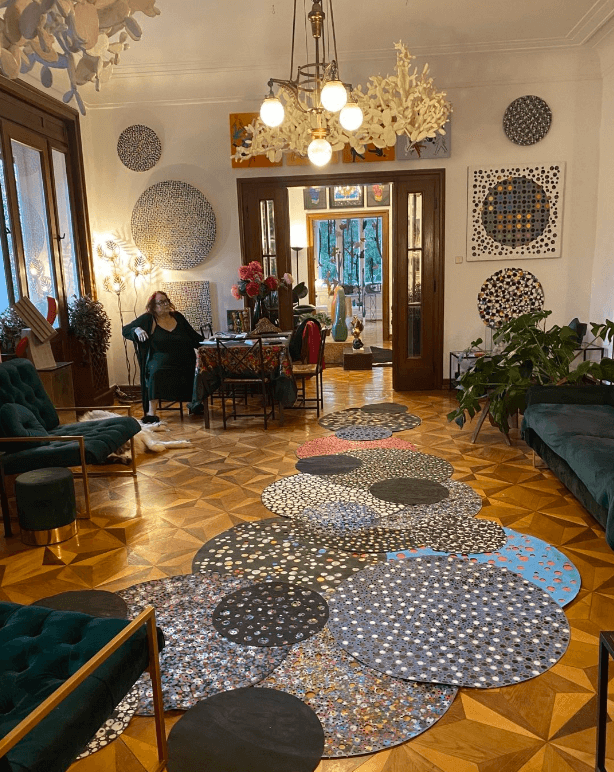
For more, make sure to check out our dedicated Travel section.
Bakar's Kukuljanovo Industrial Zone Most Well-Equipped in Country
December the 12th, 2022 - Bakar's Kukuljanovo industrial zone spans approximately 500 hectares and is by far the largest and best-equipped zone of its kind in all of Croatia.
As Poslovni Dnevnik/Darko Bicak writes, with the final complete infrastructural arrangement of this part of the Kukuljanovo industrial zone, including the accompanying newly asphalted roads and public lighting, the zone in every part of it is set to become of equal quality and attractive, including for potential new investors.
Bakar's Kukuljanovo industrial zone, spanning the aforementioned area of about 500 hectares, i.e. five million square metres, is the largest and, as they say, the most well-equipped such zone in all of Croatia. The proximity of the Port of Rijeka and the position on the motorway to the south, but even more significantly towards Zagreb and the whole of Central and Eastern Europe, are certainly this impressive zone's trump cards.
In the immediate vicinity of Kukuljanovo lies Rijeka Airport on the island of Krk, and although there has been an enormous amount of interest among entrepreneurs and business owners in working in and around this area for years, there are still around 200 hectares sitting entirely vacant in IZ Bakar, which are constantly being arranged and prepared for new tenants. Currently, more than 200 business entities with around 4,500 employees have positioned themselves on the Kukuljanovo industrial zone. There is also a free customs zone with an area of 100 hectares in this area.
The price of the land, which is being sold as a plateau at a public tender, ranges from 55 to 100 euros per square metre. The zone is constantly expanding. Just last year around 28,400 square metres of space were bought, and for this year the plan to buy another 30,000 square metres worth 5.8 million kuna in total. Revenues throughout 2022 are planned at the level of 17 million kuna, which is only 54% of the realisation from the record year of 2021.
Spatially speaking, the zone is divided into its western part, which is mostly built up, and the eastern, significantly less developed part, which is located in the wider circle of the Zlanjevo lagoon. These two spatial areas of the Kukuljanovo industrial zone are crossed by the local road called 58110, which connects the village of Kukuljanovo with the Municipality of Cavle. The existing roads in the eastern part of the zone (ex R 29/I) haven't yet been completely finished with the final wearing layer of asphalt and a suitable sidewalk.
Therefore, the City of Bakar itself, based on the contract for the maintenance of ungraded roads, carried out the ''revamp'' of the existing bearing layer of the pavement, the rehabilitation of rainwater drainage covers, the reconstruction of all drains, the replacement of all road and park curbs, the installation of the final asphalt layer of the pavement and the rehabilitation of asphalt on the pavements. Tactile panels have been installed along the pavements to make it easier for blind and visually impaired people to find their way around. The total value of the works stood at a massive 4.03 million kuna, and the contractor was Ceste Rijeka (Rijeka Roads). The length of the renovated pavement is 2,600 metres.
Perhaps the most famous ''name'' that opened a business premises on the Kukuljanovo industrial zone this year is Hrvatska posta (Croatian post), which opened a new logistics and distribution centre worth 60 million kuna back during the middle of March, which employs around 300 employee. The largest individual space in the zone is held by the Port of Rijeka with the Skrljevo Terminal, which is a back-end multipurpose logistics centre intended for the handling and storage of containers, general and bulk cargo, and even wood. It spans a total area of 440,000 square metres, of which 55,000 square metres are confined warehouses. The terminal has the status of a free customs zone.
For more, make sure to check out our news section.
All Saints Day at Zagreb's Mirogoj: History & Soul (CROMADS Video)
December 11, 2022 - Zagreb's Mirogoj cemetery is one of the most beautiful and fascinating destinations in the Croatian capital, and there is only one date to see it in all its glory - November 1, All Saints Day, as TCN's CROMADS partners joined Secret Zagreb's Iva Silla on a tour.
The impressions of visiting a tourist attraction or destination can very much depend on the time of year and several other factors. And if there is one day in the calendar year to visit the incredible main cemetery in Zagreb, it is on the busiest day of the year for Mirogoj - November 1, All Saints Day.
On this day, a free bus service is available from close to Zagreb Cathedral to shuttle the thousands of locals with their flowers and candles, who go to pay their respects to friends and family members who are buried there. It is an incredibly moving and atmospheric time to visit, and the sheer volume of flowers and candles, lovingly placed on immaculately maintained gravestones. The practice, which is mirrored in cemeteries all over Croatia on November 1, is an important part of the Croatian calendar.
Mirogoj is not just a cemetery, however, it is one of the most impressive complexes in the city, with quite a story to tell. Dating back to the 19th century, it was originally planned for some 500,000 souls, and today it is the final resting place to many prominent Croats, including the first President, Franjo Tudjman, and the late Mayor of Zagreb, Milan Bandic, as well as many other famous Croats from all walks of life, such as basketball legend Drazen Petrovic.
The cemetery can be visited all year, but All Saints Day is undoubtedly the best time, especially if you have the right tour guide in tow. There are applications to help you guide you around the quite phenomenal array of history of offer, but nothing quite beats the personal touch.
This year, the CROMADS team took some digital nomads to meet the incredible Iva Silla from Secret Zagreb for an insider tour of Mirogoj after dark. Take a tour in the video below.
For more information about CROMADS, check out the official website, and to learn more about the innovations of Secret Zagreb, click here.
Daniele Orsato of Italy Assigned to Croatia - Argentina Semifinal
December 11, 2022 - Several international media report the unofficial news that Daniele Orsato of Italy has been appointed as a referee for Tuesday's semifinal game of the 2022 World Cup between Croatia and Argentina.
Football Italia and Mundo Deportivo both reported the news tonight, supposedly received from different sources. Others, including Croatian media, have also decided to publish the news before any kind of official FIFA confirmation. The VAR referee, according to the same news sources, is supposed to be another Italian, Massimiliano Irrati.
Although it's somewhat unexpected that an Italian referee has been given the responsibility for a match between a European and a South-American nation, his performance in his career and specifically at this World Cup makes him a strong choice. The 47-year-old has already refereed an Argentina match this November, when Argentina beat Mexico 2-0 in their Group C match.
The Croatian football fans know him very well from several previous occasions when he was in charge of their matches. The most recent one happened in 2020, in the European Championships, when Croatia played England at Wembley, and lost 1-0. There were many critiques of his handling of that match, including many Croatian fans who claimed that the only England goal was scored after an obvious foul, which he didn't acknowledge. Before that, we saw him referee Croatia versus Hungary in Split in 2019, and versus Czechia in Pula in 2011 - and Croatia won both of those games.
We wish Daniele Orsato and his colleagues good luck and sharp eyesight in this game, after so many criticisms aimed at the referees at this competition!
Croatia Fulfills (Almost) All International Integration Goals
December 11, 2022 - It's been just over thirty years, but with Croatia's entry into the Schengen area and adoption of the Euro both happening on January 1st, 2023, it's clear that this country has fulfilled almost all of its realistic international integration goals.
Let's not kid ourselves, G7 is not a realistic goal (and Croatia is already a member of the G20, through the somewhat complicated relationship of the EU with that international organisation). So, the only international organisation remaining where Croatia has applied for membership, but will not be a full member yet as of January 1st, 2023 is the OECD.
In early 2022 the 30th anniversary of Croatian United Nations membership was marked. During the years, almost all other international integrations the Croatians were hoping for happened, one at a time, with the biggest one happening in 2013, with the Croatian accession to the EU.
Last week's news of the Croatian entry into the Schengen area, paired with the introduction of Euro in Croatia, both happening in weeks, marks the end of the aspirations for Croatia. As for the aforementioned OECD, the application was formally sent in January of 2022, and the official and unofficial sources estimate it will take 3-6 years to meet all of the requirements to join the 38-member Organisation for Economic Co-operation and Development. Croatian Exterior Ministry is in charge of those negotiations, which are not supposed to be easy, and it was reported earlier that Croatia was able to meet 39 out of the 260 legal "requirements".
One of the Croatian Twitter members posted a helpful chart, showing Croatia's position within the international integration in Europe, pointing out how Croatia is currently in the "inner circle" of all of the European countries, distancing itself even further from Bulgaria and Romania.
Od 2023. smo u najužem krugu eurointegracija. Do sada smo bili uz bok s Rumunjskom i Bugarskom. pic.twitter.com/7lwCxkcaq3
— Marko Božac (@markobozac) December 10, 2022
Some sceptics have, of course, taken the opportunity to point out that now, with (almost) all of the Croatian external goals taken care of, maybe the government could dedicate itself to solving some of the internal goals in the near future.
Advent in Zagreb 2022: Global Promotion, Global Media Hit
December 11, 2022 - December in Zagreb is busy like never before, as are the international column inches writing about this year's Advent in Zagreb 2022.
Of all the Croatian tourism events that I have followed over the last decade writing for TCN and Google News, none has impressed me as much as the story of Advent in Zagreb. From extremely humble beginnings on Ban Jelacic Square with just a few stalls, it was rebranded as Advent in Zagreb in 2010. Just six years later, in 2016, Advent in Zagreb was named the Best Christmas Market in Europe, a title it went on to defend in 2017 and 2018. You can read the story of the rise of Advent in this feature story on TCN - From Zero to European Champion: a History of Advent in Zagreb.
As Croatia talks about 12-month tourism, here was an example of how to take an event from nothing and make it one of the major events of the year, with almost every town in Croatia following suit with their own Advent offerings. I remember when I first came to live in Croatia back in 2002 in Jelsa on Hvar. The Christmas tree would go up on the main square on December 15, and that was that. Now there is a programme of events and gathering places throughout December in most bigger communities all over the country.
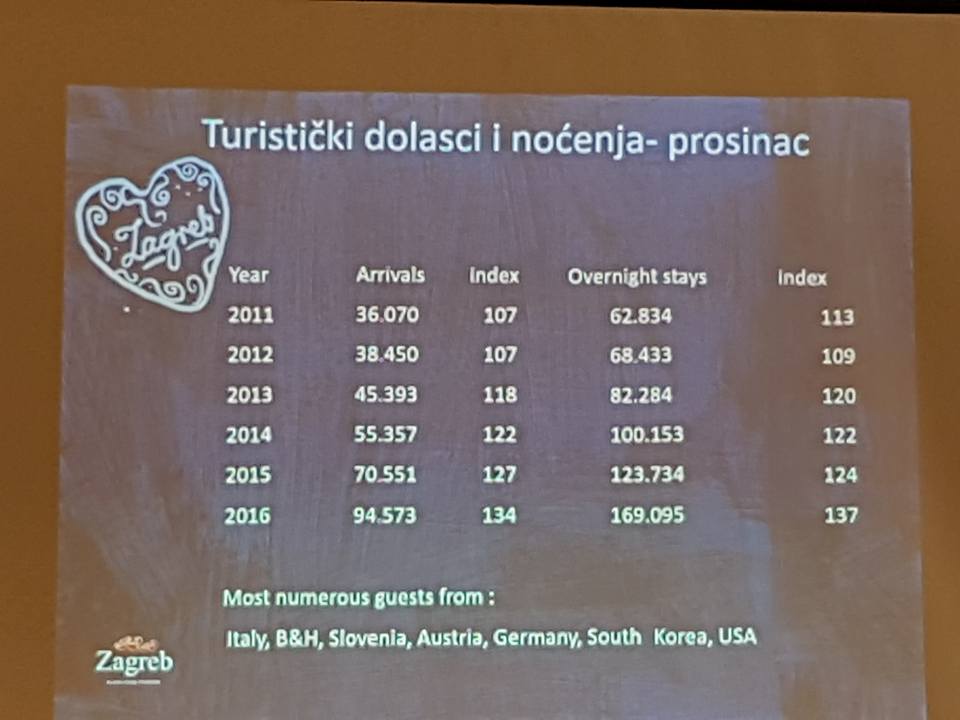
Five years ago, Zagreb Tourist Board won a FIJET award at the Croatian Association of Journalists for their promotion of Advent in Zagreb, and they gave an excellent presentation of the work behind the scenes promoting this new international event ,which I covered in detail in Advent in Zagreb: The Campaign Behind Europe's Best Christmas Market. The numbers quoted presented back then of the growth in tourism were certainly impressive, even more so when you look at the bigger picture from 2010 - 2019, below.
- In December 2010, the number of arrivals and overnight stays increased to 34,824 arrivals and 59,023 overnights, a 6 percent growth in arrivals and 5 percent growth in overnight stays compared to December 2009;
- In December 2019, 134,078 people visited Zagreb, staying 251,645 nights. Compared to December 2018, the statistics indicate a 9 percent growth in arrivals and a 9 percent growth in overnight stays.
What impressed me at that presentation back in 2017 was how visible Advent in Zagreb was on international markets, with its campaign both online and offline - the trams of Milan, below.
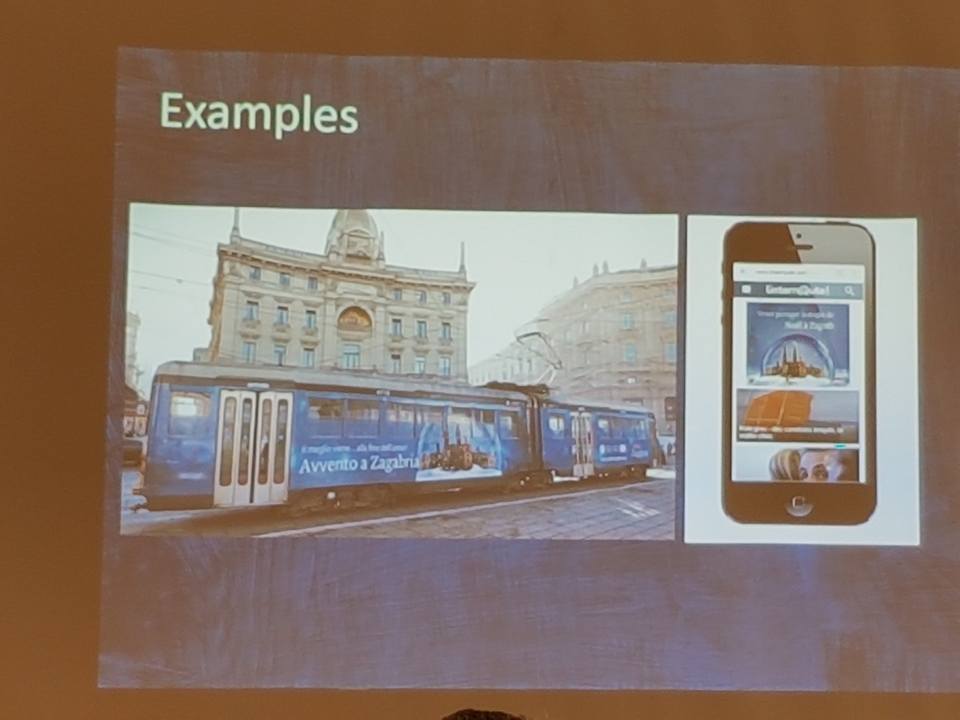
Then came the pandemic, and the world closed down for much of 2020, with big events still not back in 2021. But Advent in Zagreb continued to maintain a presence, albeit it largely in hybrid form for two years, until this year.
And, reading the international media, one could be forgiven for thinking that the pandemic had never happened, as Zagreb continued exactly where it left off in 2019 - with a raft of international promotion and media column inches.
Welcoming images of a lively Zagreb in December appeared once more in some of the major publications around the world. The Guardian, for example, chose a welcoming image of Zrinjevac as its headline image of Santa shops here: 10 of Europe’s coolest Christmas markets. That recognition of Zagreb's prominence on the Advent stage in Europe has so far been echoed in additional articles in CNN, The Mirror, The Daily Telegraph, Daily Mail, The Independent, and Conde Nast Traveller.
Martina Bienenfeld, CEO of the Zagreb Tourist Board, gave a little more detail on the international efforts and success of the promotion of Advent in Zagreb in a recent statement last month:
"Just as in the article itself it is written - Zagreb's Advent has recently strengthened itself among the best in Europe, so we are especially happy with announcements like this because additionally position our city on the European map of Christmas markets. Also, I would point out that and the news about Advent Zagreb, in its monthly newsletter, was also reported by UNWTO, which includes 160 member states and more than 500 associated members representing the private sector, educational institutions, tourism associations and local tourist authorities. And we can see by checking the booking.com platform itself that the capacity occupancy in Zagreb for the first weekend of Advent is already more than 82., Therefore, I expect that Advent in Zagreb, after two pandemic years, will again show that it is one of the most important events for Zagreb and Croatian tourism.
"Let me remind you, in the Tourist Board of the City of Zagreb, we started with international offline and online promotion via Google, social networks, native articles as well as of mobile advertising in Europe, the USA and Canada, in a total of 21 markets. This year, we are especially promoting Advent on the well-known tourist portal Expedia on the US market, as well as on the Smithsonian portal as part of the multi-month destination campaigns. We also achieved our traditional promotional cooperation with Croatia Airlines, Turkish Airlines and Croatian Railways with whom we secured special prices tickets for visiting Zagreb Advent."
The atmosphere around Zagreb at the moment is fantastic, with Advent and Croatia's incedible World Cup run proving to be a winning combination. You can learn more about Advent in Zagreb 2022 and its programme on the official website.


